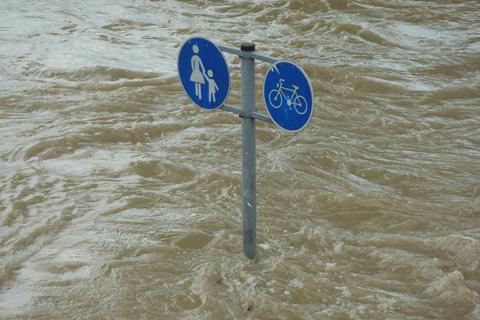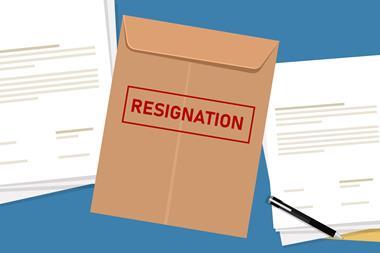Speaking at the Conservative Party Conference in Manchester yesterday, panellists discuss how the UK’s public and private sectors can help developing countries and where insurance fits into this
Collaboration is needed to navigate the influx of natural disasters and extreme weather.
This was the message from Dominic Christian, global chairman of reinsurance solutions at Aon during a panel session on day three of the Manchester Conservative Party Conference.
He said: “The role of insurers and brokers has perhaps never been so valuable and yet possibly never been so unharnessed.” This is due to the changing risk landscape and so much of it going uninsured.
The panel mulled over how the government and insurance sector can work together in the developing world.
It follows the reinsurance broker tracking natural catastrophe insured losses at $20bn – 26% lower than the 18-year average of $27bn.
In July it released its Impact Forecasting report of natural catastrophe events for the first half of 2019, revealing that re/insured losses are down on the long-term average.
Too reactive
But Ben Webster, head of emergencies, surge and technical advice (ESTA) at the British Red Cross added that from his perspective historically, it has been dealt with in a “far too reactive” manner waiting until disaster strikes and then trying to mobilise resources.
The private sector is currently not engaging to bring in expertise to address these kinds of issues. He questioned how this issue could be tackled at scale without it.
The Red Cross is drafting in volunteers to assist with this.
He said his message was: “I don’t think we should focus on products, we need to develop solutions together, that we can practically use on the ground and it will require contextual understanding in the various places that we are working.”
Although in recent years there has been some improvement in engagement, there is still a long way to go.
He cited a report released in September “The Cost of doing Nothing” which highlights the human and financial impact if the industry were to continue dealing with these instances in the current manner. It estimated that the number of people in need of humanitarian assistance as a result of storms, droughts and floods could climb beyond 200 million annually.
One example of recent flooding is Whaley Bridge, significant rainfall caused the dam to partially give way resulting in flooding.
First-hand experience
Theo Clarke, chief executive at coalition for global prosperity spoke from experience after having been evacuated from Hurricane Dean in Belize during 2007. It saw the roads closed for days, food shortages and the border to Mexico completely destroyed. Clarke said that it caused £1.6bn worth of damage and impacted 10 countries including Jamaica and Guatemala.
“What was really interesting on agriculture – for two years after they were not able to grow any bananas, I saw first-hand the devastation,” she added.
Clarke said it is difficult to comprehend the scale of what needs to be dealt with and that climate change is “very real and dangerous fact”.
“We have all seen extreme weather in the UK, really hot summers, more snow in the winter, we are starting to see the impact but that is nothing in comparison to other parts of the world. I was really happy to see that when Penny Mordaunt [May-July 2019] became secretary of state we started to leverage more partnerships particularly between the private sector and international development.
“If we are going to tackle these major issues, we must first of all make sure we are there for countries that have been devastated by these events but also prepare them to be more resilient. We have got to leverage government finance and the private sector to work hand in hand with civil society,” she said.
Extreme weather
Clarke cited Lloyd’s of London as an example of a “good partnership,” it worked with UK Department for International Development (DfID) last year. Lloyd’s worked with DfID to set up the centre for Global Disaster Protection. Last year Lloyd’s hosted the innovation lab looking at how to develop new financial instruments and what are the incentives for resilience with risk transfer.
DfID has also partnered with the Met office to predict weather patterns. “I think there is a lot more that we can do, we have much better systems in place” she said but that we should be proud that the British aid budget is helping.
This is because of those affected often do not have insurance in place as often they cannot afford it.

Risk management gap
But Ian Branagan, SVP and Group Chief Risk Officer, RenaissanceRe stressed: “We don’t have a protection gap; we have a risk management gap.”
“Underpinning the problem is the demand part of the equation, does it have the ability to quantify it and therefore understand the cost benefits [of insurance], underpinning that is risk insight,” he said.
He suggested that the way forward would be to steer conversations towards risk insight – something that is beginning to happen within cyber insurance currently.
Ben Roback, political consultant at Cicero Group and ConservativeHome chair concluded that two things stood out in the panel – opportunity and collaboration.
“The Insurance Development Forum estimates that 1% insurance penetration can reduce disaster recovery burdening tax payers by 22%,” he added.
Subscribers read more
What lessons are to be learnt for extreme weather claims following Whaley Bridge?












































No comments yet